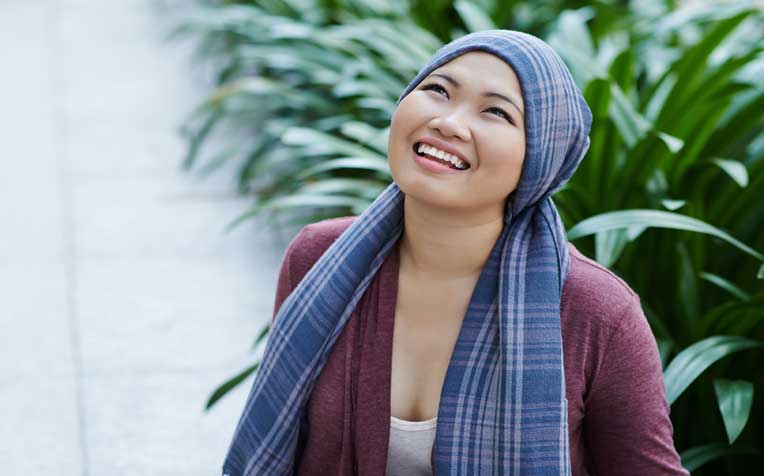
Alopecia or hair loss, one of the most signficant side effects of chemotherapy, can be delayed to an extent with the use of mild shampoos and soft hair brushes. Caps, scarves, turbans and wigs help patients better cope with extensive hair loss.
What are some side effects of chemotherapy?
Cancer chemotherapy is known for its side effects such as nausea, hair loss and tiredness. These can get severe enough to take over the patient’s daily life, making it difficult to stick to the treatment, which then becomes less effective than it could be. Chemotherapy can cause side effects in different parts of the body, as it not only kills cancer cells but affects normal ones too. But normal cells will regrow, making most of the side effects temporary.
Chemotherapy is usually given in phases ‒ a treatment phase and a resting phase. Some side effects occur just after treatment and last a few days. Others may last for the entire duration of chemotherapy. Not every patient will experience the same side effects. Doctors, nurses or pharmacists will help to manage and educate patients on what they may experience. Patients can go a long way towards coping if they understand this and remain positive. Here are some tips from Your Guide to Chemotherapy, a booklet produced by the National Cancer Centre Singapore, a member of the SingHealth group.
Nausea and vomiting
If these occur, symptoms are usually worse on the day of treatment and can last three or more days after chemotherapy. Anti-vomiting medicine and eating small, frequent meals may lessen symptoms. Foods such as dry crackers, sour candy, rice porridge or noodle soup may offer comfort. Eat and drink slowly, and avoid fatty, fried, spicy or very sweet foods. If the nausea starts during treatment, it may help to eat a few hours before treatment time.
Hair loss
A condition also known as alopecia, it can be quite significant with some chemotherapy drugs. It usually begins about 10 to 21 days after treatment starts. While it may not be possible to stop hair loss, one practical tip is to cut hair short so that it is easier to manage when hair loss begins. Using mild shampoos and soft hair brushes may help slow down the process to some extent. Others may prefer caps, scarves, turbans or wigs. For wigs to be a good match in colour and style, an early start in getting one – while there is still enough hair on the scalp – helps.
Bleeding
Chemotherapy affects platelets (cells that make blood clot), so there is a risk of bleeding or bruising even with minor injuries. Bleeding can occur externally (open cuts, nosebleeds or piles) or internally (from the stomach, lungs, brain or bladder). Some signs of internal bleeding include:
- a fine red rash on the feet and legs
- blood in the saliva, stools, urine or vomitus
- unusually heavy menstruation
- bloodshot eyes
- severe headaches
- dizziness
- and increased weakness
Prevention is important. As some medicines and herbs can cause bleeding, check with the doctor before taking them. Alcohol is also not advised. Avoid contact sports, and take extra care when handling or working near sharp objects. Keep nails short, and apply skin lotion regularly to keep skin moist so as to prevent skin breaks. Use a soft-bristled toothbrush, and blow your nose gently.
Ref: O17
Contributed by















 Get it on Google Play
Get it on Google Play